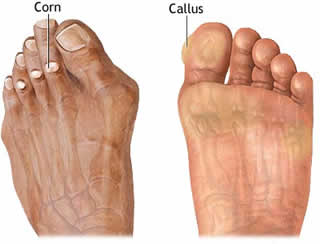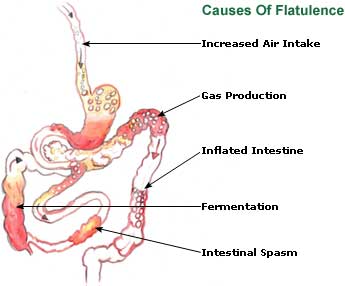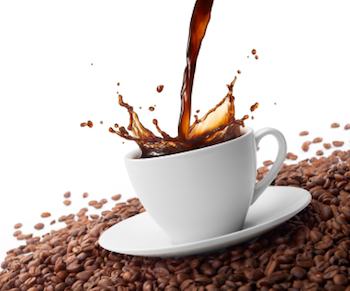Laughter is strong medicine for mind and body
“Your sense of humor is one of the most powerful
tools you have to make certain that your daily mood and emotional state
support good health.”
~ Paul E. McGhee, Ph.D.
Laughter is a powerful antidote to stress, pain, and
conflict. Nothing works faster or more dependably to bring your mind and
body back into balance than a good laugh. Humor lightens your burdens,
inspires hopes, connects you to others, and keeps you grounded, focused,
and alert.
With so much power to heal and renew, the ability to
laugh easily and frequently is a tremendous resource for surmounting
problems, enhancing your relationships, and supporting both physical and
emotional health.

Laughter is good for your health
- Laughter relaxes the whole body. A good, hearty laugh relieves physical tension and stress, leaving your muscles relaxed for up to 45 minutes after.
- Laughter boosts the immune system. Laughter
decreases stress hormones and increases immune cells and
infection-fighting antibodies, thus improving your resistance to
disease.
- Laughter triggers the release of endorphins,
the body’s natural feel-good chemicals. Endorphins promote an overall
sense of well-being and can even temporarily relieve pain.
- Laughter protects the heart. Laughter
improves the function of blood vessels and increases blood flow, which
can help protect you against a heart attack and other cardiovascular
problems.
| The Benefits of Laughter |
Physical Health Benefits:
- Boosts immunity
- Lowers stress hormones
- Decreases pain
- Relaxes your muscles
- Prevents heart disease
|
Mental Health Benefits:
- Adds joy and zest to life
- Eases anxiety and fear
- Relieves stress
- Improves mood
- Enhances resilience
|
Social Benefits:
- Strengthens relationships
- Attracts others to us
- Enhances teamwork
- Helps defuse conflict
- Promotes group bonding
|
Laughter and humor help you stay emotionally healthy
Laughter makes you feel good. And the good feeling
that you get when you laugh remains with you even after the laughter
subsides. Humor helps you keep a positive, optimistic outlook through
difficult situations, disappointments, and loss.
More than just a respite from sadness and pain,
laughter gives you the courage and strength to find new sources of
meaning and hope. Even in the most difficult of times, a laugh–or even
simply a smile–can go a long way toward making you feel better. And
laughter really is contagious—just hearing laughter primes your brain
and readies you to smile and join in the fun.
The link between laughter and mental health

- Laughter dissolves distressing emotions. You can’t feel anxious, angry, or sad when you’re laughing.
- Laughter helps you relax and recharge. It reduces stress and increases energy, enabling you to stay focused and accomplish more.
- Humor shifts perspective,
allowing you to see situations in a more realistic, less threatening
light. A humorous perspective creates psychological distance, which can
help you avoid feeling overwhelmed.
The social benefits of humor and laughter
Humor and playful communication strengthen our
relationships by triggering positive feelings and fostering emotional
connection. When we laugh with one another, a positive bond is created.
This bond acts as a strong buffer against stress, disagreements, and
disappointment.
Laughing with others is more powerful than laughing alone
Creating opportunities to laugh
- Watch a funny movie or TV show.
- Go to a comedy club.
- Read the funny pages.
- Seek out funny people.
- Share a good joke or a funny story.
- Check out your bookstore’s humor section.
- Host game night with friends.
- Play with a pet.
- Go to a “laughter yoga” class.
- Goof around with children.
- Do something silly.
- Make time for fun activities (e.g. bowling, miniature golfing, karaoke).
Shared laughter is one of the most effective tools
for keeping relationships fresh and exciting. All emotional sharing
builds strong and lasting relationship bonds, but sharing laughter and
play also adds joy, vitality, and resilience. And humor is a powerful
and effective way to heal resentments, disagreements, and hurts.
Laughter unites people during difficult times.
Incorporating more humor and play into your daily
interactions can improve the quality of your love relationships— as
well as your connections with co-workers, family members, and friends.
Using humor and laughter in relationships allows you to:
- Be more spontaneous. Humor gets you out of your head and away from your troubles.
- Let go of defensiveness. Laughter helps you forget judgments, criticisms, and doubts.
- Release inhibitions. Your fear of holding back and holding on are set aside.
- Express your true feelings. Deeply felt emotions are allowed to rise to the surface.
Bringing more humor and laughter into your life
Want more laughter in your life? Get a pet…

Most of us have experienced the joy of playing
with a furry friend, and pets are a rewarding way to bring more
laughter and joy into your life. But did you know that
having a pet is good for your mental and physical health? Studies show that pets can protect you depression, stress, and even heart disease.
Laughter is your birthright, a natural part of life
that is innate and inborn. Infants begin smiling during the first weeks
of life and laugh out loud within months of being born. Even if you
did not grow up in a household where laughter was a common sound, you
can learn to laugh at any stage of life.
Begin by setting aside special times to seek out
humor and laughter, as you might with working out, and build from
there. Eventually, you’ll want to incorporate humor and laughter into
the fabric of your life, finding it naturally in everything you do.
Here are some ways to start:
- Smile. Smiling is the beginning
of laughter. Like laughter, it’s contagious. Pioneers in “laugh
therapy,” find it’s possible to laugh without even experiencing a funny
event. The same holds for smiling. When you look at someone or see
something even mildly pleasing, practice smiling.
- Count your blessings. Literally
make a list. The simple act of considering the good things in your life
will distance you from negative thoughts that are a barrier to humor and
laughter. When you’re in a state of sadness, you have further to travel
to get to humor and laughter.
- When you hear laughter, move toward it. Sometimes
humor and laughter are private, a shared joke among a small group, but
usually not. More often, people are very happy to share something funny
because it gives them an opportunity to laugh again and feed off the
humor you find in it. When you hear laughter, seek it out and ask,
“What’s funny?”
- Spend time with fun, playful people.
These are people who laugh easily–both at themselves and at life’s
absurdities–and who routinely find the humor in everyday events. Their
playful point of view and laughter are contagious.
- Bring humor into conversations. Ask people, “What’s the funniest thing that happened to you today? This week? In your life?”
Developing your sense of humor: Take yourself less seriously
One essential characteristic that helps us laugh is
not taking ourselves too seriously. We’ve all known the classic
tight-jawed sourpuss who takes everything with deathly seriousness and
never laughs at anything. No fun there!
Some events are clearly sad and not occasions for
laughter. But most events in life don’t carry an overwhelming sense of
either sadness
or delight. They fall into the gray zone of ordinary life–giving you the choice to laugh or not.
Ways to help yourself see the lighter side of life:
- Laugh at yourself. Share your
embarrassing moments. The best way to take yourself less seriously is
to talk about times when you took yourself too seriously.
- Attempt to laugh at situations rather than bemoan them.
Look for the humor in a bad situation, and uncover the
irony and absurdity of life. This will help improve your mood and
the mood of those around you.
- Surround yourself with reminders to lighten up.
Keep a toy on your desk or in your car. Put up a funny poster in
your office. Choose a computer screensaver that makes you laugh.
Frame photos of you and your family or friends having fun.
- Keep things in perspective. Many
things in life are beyond your control—particularly the
behavior of other people. While you might think taking the weight
of the world on your shoulders is admirable, in the long run it’s
unrealistic, unproductive, unhealthy, and even egotistical.
- Deal with your stress. Stress is a major impediment to humor and laughter.
- Pay attention to children and emulate them. They are the experts on playing, taking life lightly, and laughing.
Checklist for lightening up
When you find yourself taken over by what seems to be a horrible problem, ask these questions:
- Is it really worth getting upset over?
- Is it worth upsetting others?
- Is it that important?
- Is it that bad?
- Is the situation irreparable?
- Is it really your problem?

Using humor and play to overcome challenges and enhance your life
The ability to laugh, play, and have fun with others
not only makes life more enjoyable but also helps you solve problems,
connect with others, and be more creative. People who incorporate humor
and play into their daily lives find that it renews them and all of
their relationships.
Life brings challenges that can either get the best of you or become
playthings for your imagination. When you “become the problem” and take
yourself too seriously, it can be hard to think outside the box and
find new solutions. But when you play with the problem, you can often
transform it into an opportunity for creative learning.
Playing with problems seems to come naturally to
children. When they are confused or afraid, they make their problems
into a game, giving them a sense of control and an opportunity to
experiment with new solutions. Interacting with others in playful ways
helps you retain this creative ability.
Source: http://www.helpguide.org




















